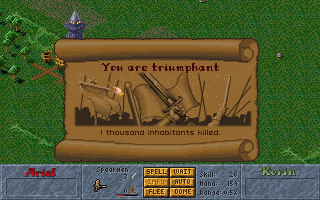

At the same time, the novel was gradually assimilated to high brow literary culture beginning with the 1919 moment, the rise of anti‑colonial nationalism and of the “national literature” school.ĥ In your book, you offer a reinterpretation of the nahda based on popular literature in Egypt at the turn of the 20 th century. So in a sense, early Arab critics had no choice but to accept the de facto dominance of the genre. Moreover, the modern literary market came into being thanks to the novel (another sense in which it was a threshold genre) and the trade in novels quickly became the mainstay of this market all over the world. Critics who turned up their noses at fiction, or found it morally problematic (much like their European counterparts), recognized this popular lineage. What I argue in the book is that the novel was a threshold genre because it was heir to a popular, semi-oral narrative tradition which was pretty low on the scale of “noble” genres as far as the 19 th century neoclassical revival is concerned. The literary system was undergoing deep changes in the second half of the nineteenth century: new genres, new readerships, new technologies of production and distribution. How did this genre manage to find its legitimacy and to become predominant in the region?Ĥ Keep in mind that the novel arrives into Arabic on the heels of the neoclassical revival.

However, this has not prevented the elite from considering the novel as a suspicious or even pernicious genre. Unauthorized translation evaded all kinds of power regimes, local and foreign: for example, the censure of local critics who decried what they saw as vulgar, foreign fiction, as well as imperial intellectual property regimes that continued to uphold “the original” as the summit of a pernicious cultural ontology.ģ The press has played a major role in the diffusion of novels through serialization, and therefore contributed to the popularity of the genre. Most of this fiction was European and was adapted into Arabic as part of a process which I call “unauthorized” transfer in the book. For the period and specific genre that I look at in my book (the novel during the first decade of the 20th century), translation served this new reading public’s thirst for modern fiction and for what in French is suggestively referred to as dépaysement.

Later, translation in Beirut and Cairo served the seminal project of language reform and the expansion of journalism and of the Arab reading public. In the early part of the nahda, translation served the bureaucratic and technological needs of the modernizing state in rivalry with the imperial ambitions of the great powers (Muhammad Ali’s Egypt). At the same time, colonialism is only one part of the story.

How did the circulation of those texts work? To what extent did the colonial system influence the choice and diffusion of some texts?Ģ Nahda is used to describe a very broad period (early 19 th through early 20 th centuries) so the answer to your question would change depending on what part of this century-long period we turn our attention to. Propos recueillis et traduits par Léa Polveriniġ The nahda inaugurated a wide translation movement responsible for translating a significant volume of European texts into Arabic.


 0 kommentar(er)
0 kommentar(er)
